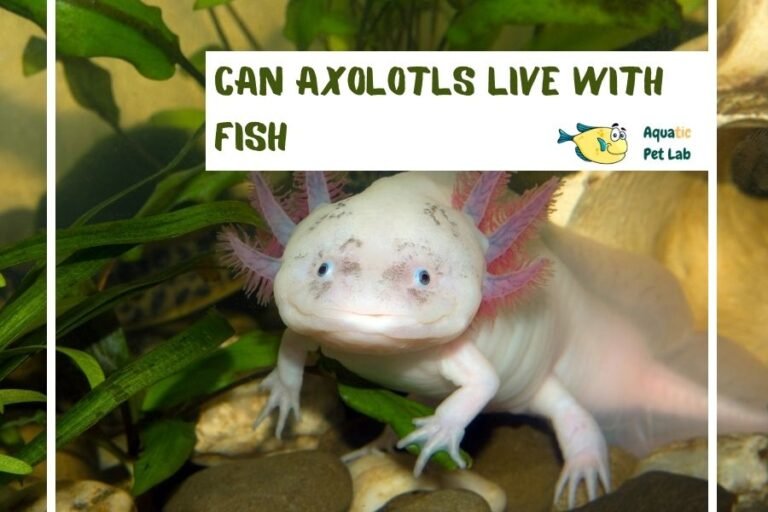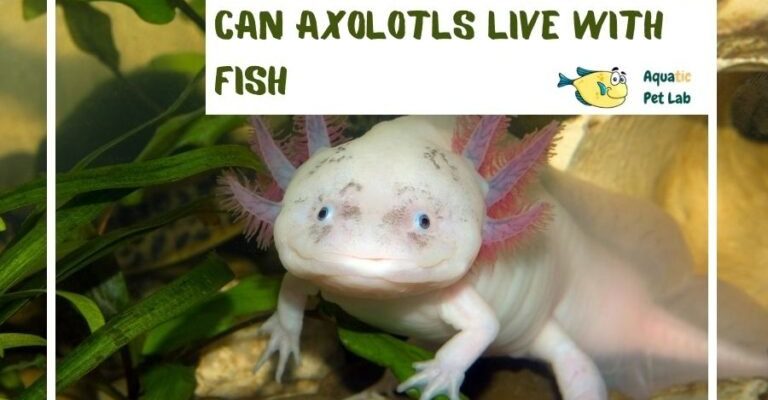
Here’s the thing: while it seems like it could be a match made in aquatic heaven, there are a lot of factors to consider. It’s not just about how cute they look together—they have different needs, temperaments, and even dietary habits. Let’s dive into what you need to know about making axolotls and fish tank mates, so you can create a harmonious habitat for your aquatic pals.
Understanding Axolotl Behavior
Before we start mixing and matching tank mates, it’s important to understand axolotls themselves. These fascinating creatures are not your typical fish. Axolotls, or *Ambystoma mexicanum*, are amphibians that remain in their larval form throughout their lives. This means they have gills and a preference for a water environment. They can be a bit quirky in their behavior, often floating around the tank or resting on the bottom, which is all part of their charm.
Axolotls are generally peaceful creatures. However, they can exhibit territorial behaviors, especially if they feel threatened. They have a natural instinct to hunt, and their diet primarily consists of worms, small insects, and, occasionally, small fish. So, if you’re considering tank mates, their natural instincts will play a big role in who they can share their space with.
You might be wondering how their behaviors could affect potential fish tank mates. Well, axolotls have a curious disposition. They may nibble on smaller fish simply out of curiosity—or even hunger! So, it’s crucial to select fish that are not only compatible but also large enough to avoid becoming a snack.
Choosing the Right Fish for Axolotl Co-habitation
So, what fish can live with axolotls? To answer that, we need to look for fish that are generally peaceful, are not too small, and can thrive in similar water conditions. Here are a few types to consider:
- Barbs – Fish like rosy barbs or tiger barbs can often coexist with axolotls. They’re active swimmers and tend to be a bit larger, which makes them less likely to be seen as food.
- Guppies – While guppies can be a good option, they can sometimes get nibbled on if they’re too small. If you choose guppies, ensure they’re larger and maintain a healthy group of them to distract the axolotl.
- Corydoras Catfish – These bottom dwellers are peaceful and tend to avoid confrontation. They can coexist well with axolotls, enjoying the substrate while staying out of the way.
When picking fish, avoid smaller species like neon tetras or bettas. They might fit in a tank, but they could easily become prey. Remember, a happy tank is one where everyone can thrive without feeling threatened!
Setting Up the Tank Environment
Creating a suitable environment for your axolotls and their potential fish companions is essential. Axolotls prefer cooler water temperatures, around 60-68°F (15-20°C). Ensuring the water is at an appropriate temperature is necessary, as some fish may struggle under these conditions.
Also, consider the tank setup. Axolotls need hiding places, so adding decorations like caves or sturdy plants can help them feel secure. Remember, though, if the decor is too small and doesn’t offer hiding spots for both, it could lead to stress for your axolotls, or worse, conflict between them and the fish.
When it comes to filtration, a good water filter is essential. Since axolotls have delicate skin, make sure the water current isn’t too strong. You might want to invest in a filter with adjustable flow to keep the water clean without overwhelming your axolotls.
Feeding Considerations for Mixed Tanks
Feeding can also get tricky when you introduce fish to an axolotl’s diet. Axolotls primarily eat protein-based foods, while fish can have varied dietary needs. If you’re raising fish alongside your axolotl, be sure to provide food that meets both their needs without creating competition.
For axolotls, high-quality pellets or live food are often the best options. In a mixed tank, try to avoid overfeeding, as leftover food can lead to water quality issues. A good strategy is to feed your axolotl during a time when the fish can also eat. Just keep an eye out to ensure the fish aren’t swiping at the axolotl’s food.
Also, consider feeding them separately if you notice any aggressive behavior. It’s all about finding that balance so everyone gets their proper nutrition while avoiding unnecessary drama in the tank.
Monitoring Behavior and Compatibility
Once you introduce fish to your axolotl’s habitat, keep a close eye on their interactions. You want to make sure neither party feels threatened, and that both the fish and axolotls are remaining healthy.
If you notice that your axolotl is being overly aggressive or the fish are acting stressed, it may be time to reassess your setup. Sometimes, even the best-planned combinations can lead to unexpected outcomes. You might have to separate the fish or make adjustments to provide more hiding spots.
Here are some signs to watch for:
- Eating Habits – If your axolotl is consistently targeting fish during feeding times, it could be a big red flag.
- Stress Signs – Look for signs of stress in both your axolotl and the fish, like erratic swimming or hiding excessively.
- Physical Damage – Check for scratches or bites on either species. This is a clear indicator that compatibility isn’t working out as planned.
Final Thoughts on Axolotl and Fish Compatibility
Overall, while it is possible for axolotls to live with certain types of fish, it requires careful consideration and planning. The key is to choose fish that are of adequate size, peaceful in nature, and have similar water quality needs. Always monitor their interactions and adjust the environment as needed to promote harmony.
In the end, creating a beautiful underwater world with axolotls and fish can be a rewarding experience. Just remember, patience and observation are your best friends. If things get a little tricky, don’t be afraid to reconsider your tank mates.
So, whether you decide to go for those colorful barbs or stick with the quiet corydoras catfish, you’re on your way to maintaining a thriving aquatic ecosystem. Happy fish-keeping!

